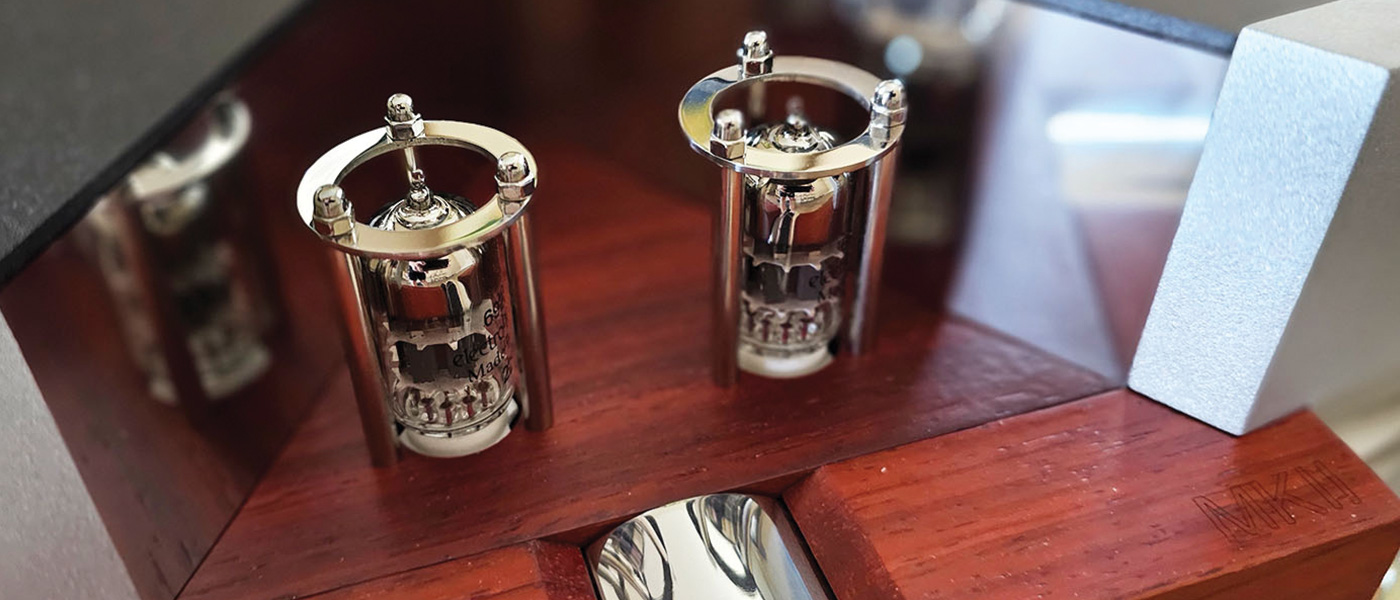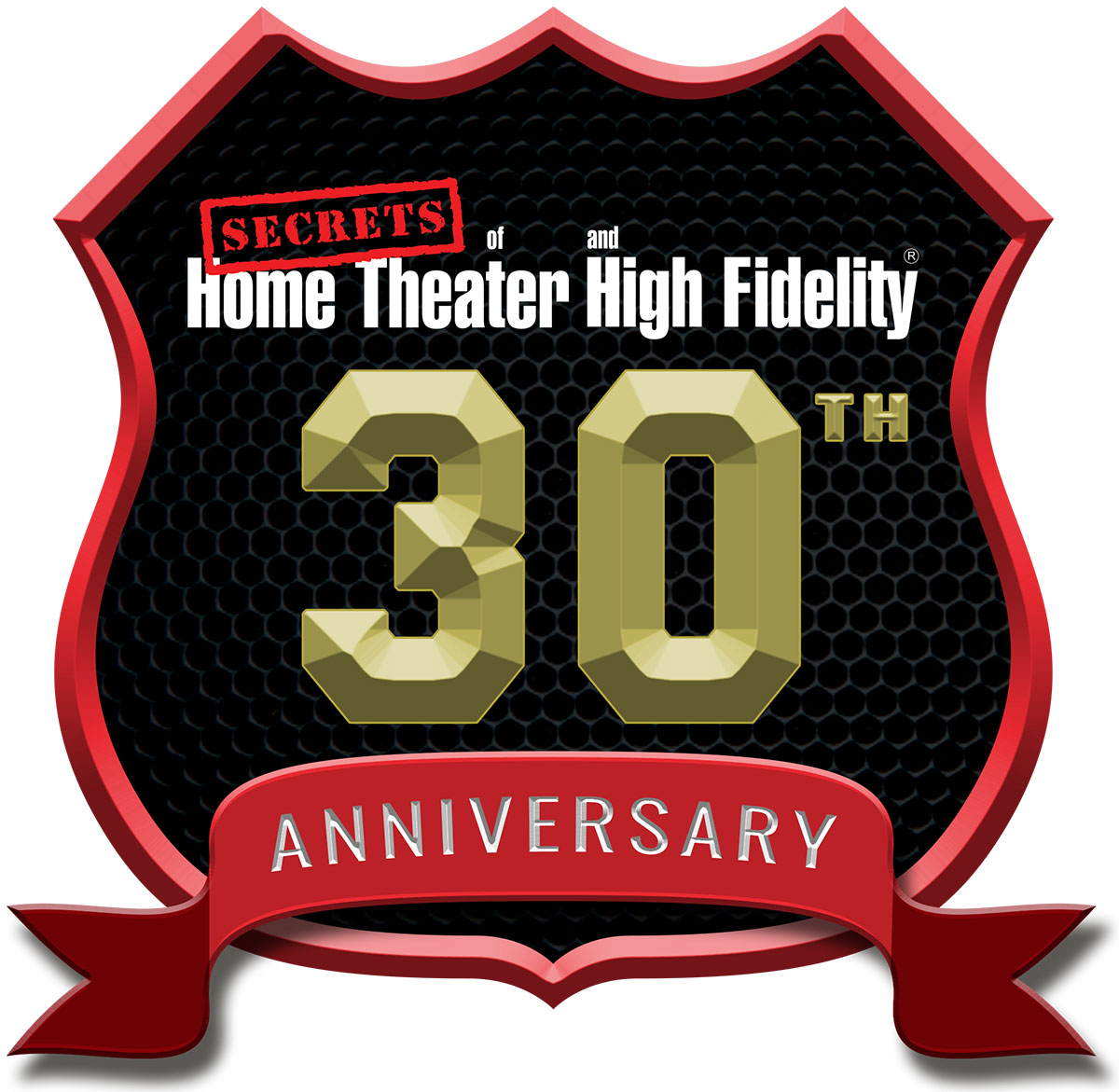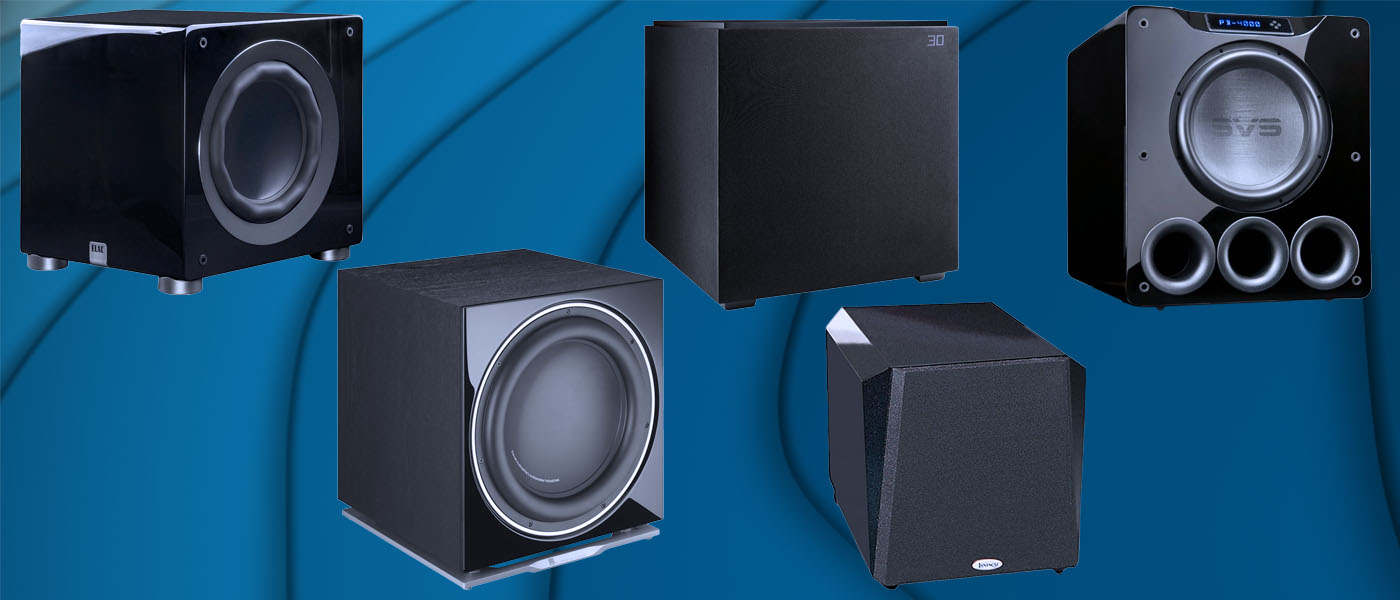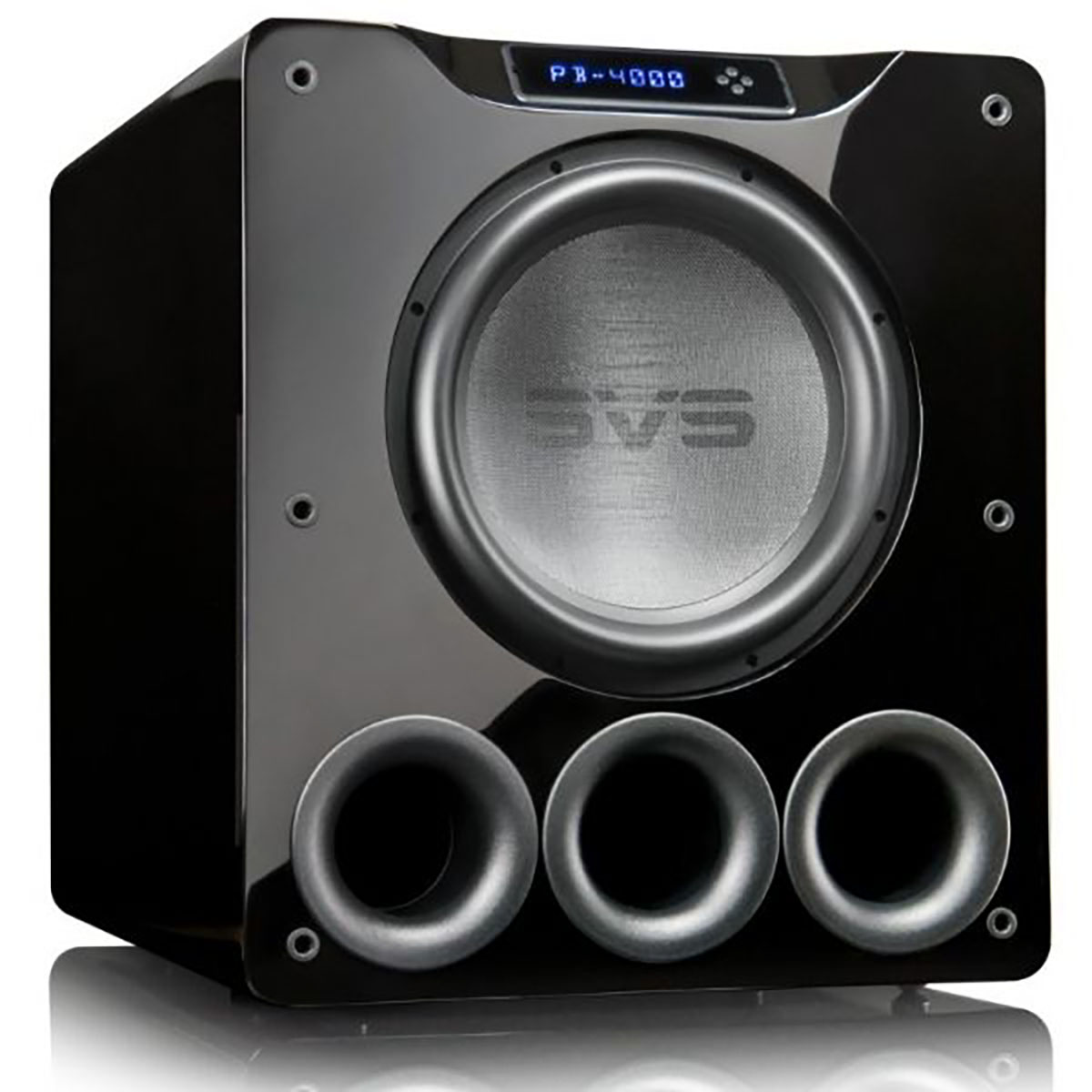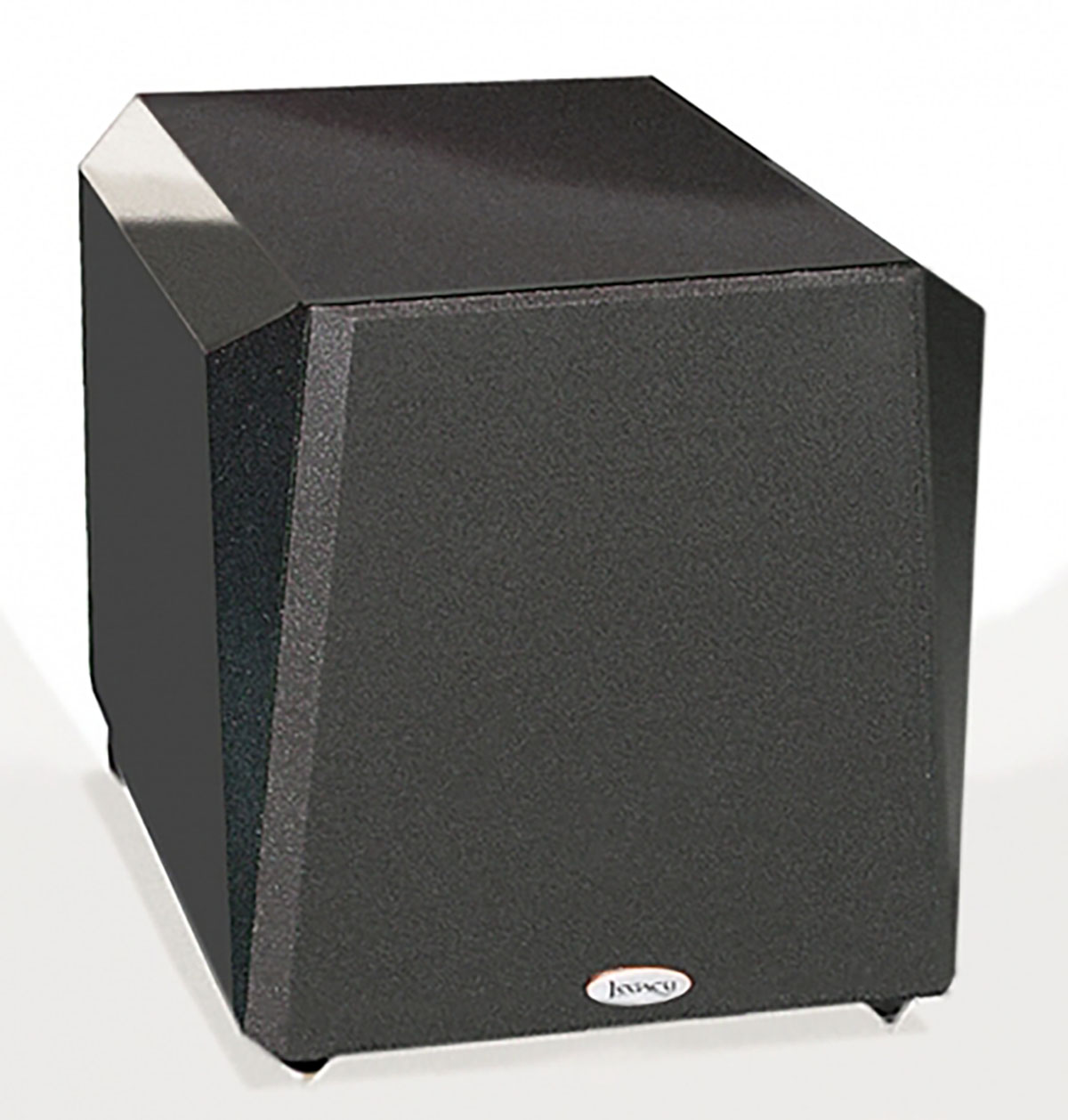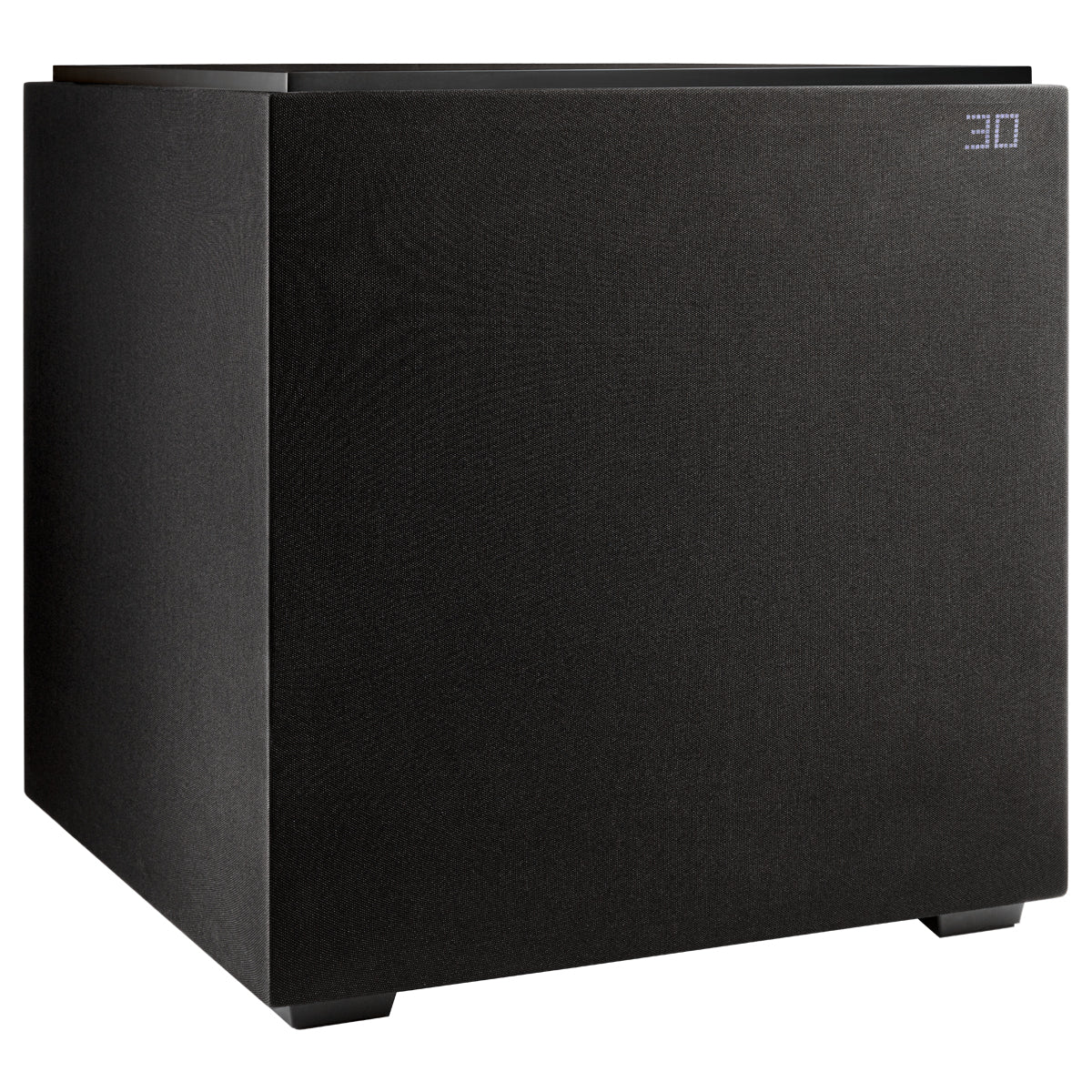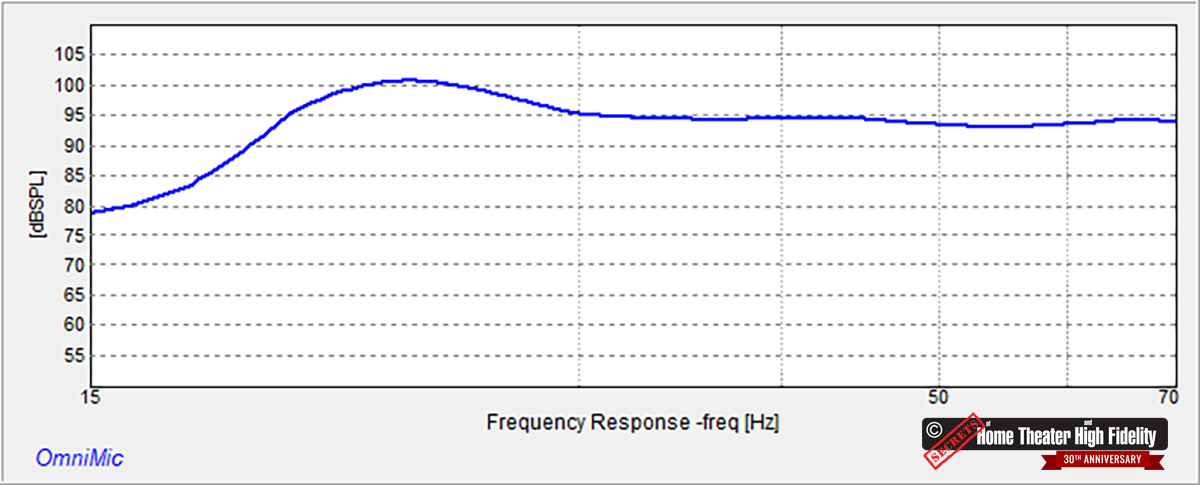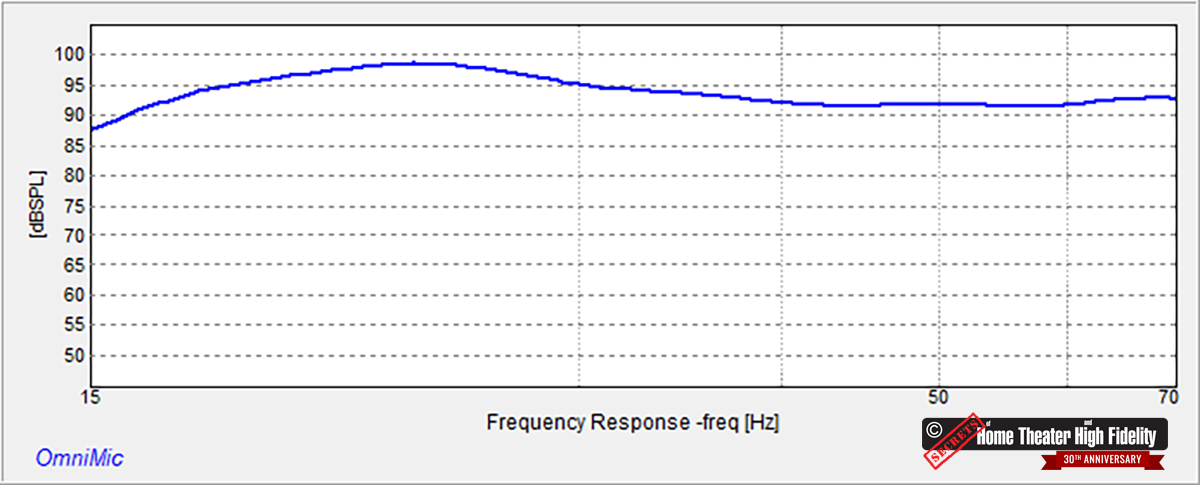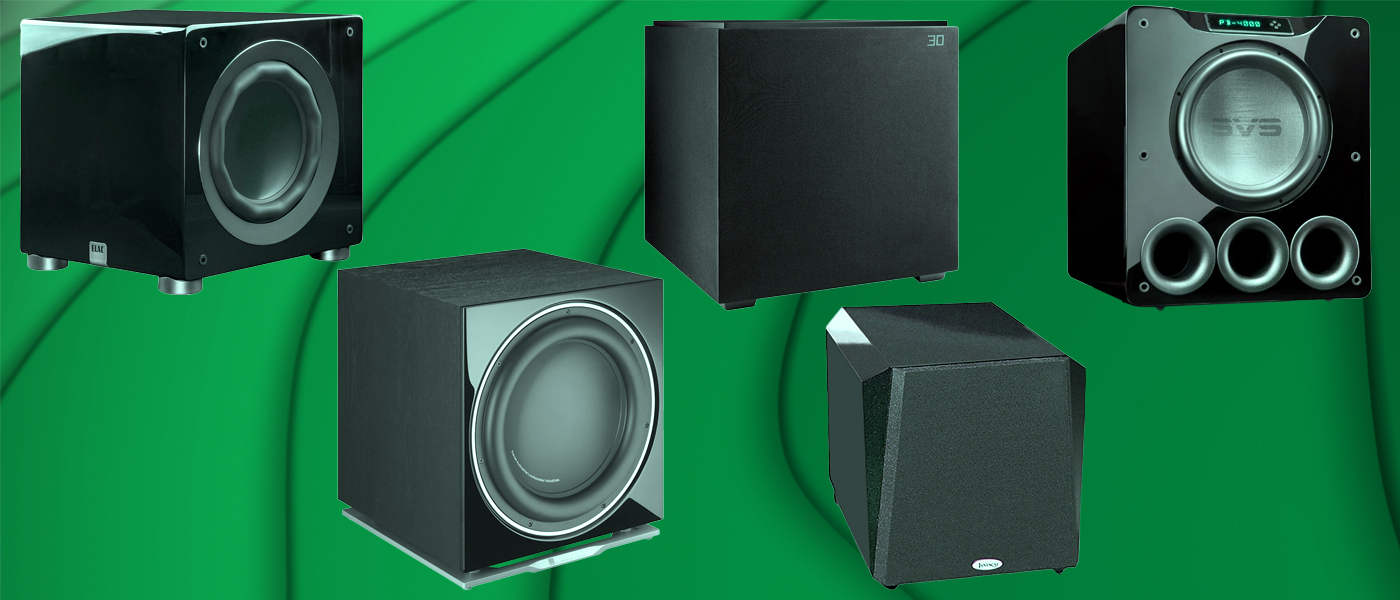If you love being in those arguments, this article is not for you. This is going to be a round-robin discussion of five subwoofers that are all fantastic performers. Each of them was vetted heavily before being selected for this article. The primary goal here is to explain, in simple terms, how a good subwoofer can elevate the movie and music experience. Each of these “bass delivery units” comes from a company that also offers a full line of excellent loudspeakers. These companies have a tremendous dealer network which can help you pick out and set up a really good system. All five can anchor the bottom two plus octaves in your system, and, when used with a quality receiver that offers something like Audyssey MultEQ XT-32, DIRAC Live, Anthem Room Correction (ARC), or other equally adept room correction systems, can deliver an immersive experience for less than $10,000 for the entire system. The subwoofers in question are the SVS PB-4000, ELAC DS1200 Varro, Definitive Technology DN15, DALI K-14 F, and the Legacy Metro.
This review (or perhaps a better choice of words would be roundup) is not intended to pick a ‘winner.’ The end goal for this endeavor is to bring useful information to people who want to extend the bass response in the current system or to help understand how to build a system from scratch with the subwoofer as the foundation. We will try to do this in plain language to give useful information about subwoofers to those who might not be ‘experts’ in this arena.
Why ‘Beauties and the Beasts?” for the headline? It’s a matter of the size of each unit along with input from my in-home décor expert (that would be the lovely and talented Mrs. Chase). The SVS and Definitive Technology subwoofers are the BEASTS, while the ELAC, DALI, and Legacy subs are the BEAUTIES. My domestic WAF expert deemed them as such when she saw them. Her first words were “Let me guess, you like those two BEASTS more than the pretty ones I actually want in the room.” And that is where this idea took off. We are going to explore how capable each unit is in a rather difficult, 25 x 24 x 9-foot room that has a 4-foot-wide opening into a 7000 cubic foot kitchen area.
The strengths and weaknesses of each subwoofer will be included in this write-up, along with the in- room response curve from each. We will be watching movies, listening to music, and generally having fun. Here are some of the basics of this review. I have lived with each subwoofer for a little more than a month and must add a thank you to each manufacturer for not only having the cajones to participate in this process but also for their patience as it has unfolded.
You may wonder what the qualifications are in terms of putting this review together. Since 1997 I have tested or helped test over 150 subwoofers in this same room and the same location. These have included Velodyne, JL Audio, Hsu Research, ACI, Martin Logan, EPIK, Infinity, TC Sounds, Eminence, Creative Sound Solutions, Outlaw Audio, Power Sound Audio, SVS, Axiom, Elemental Designs, Sonus faber, REL, MJ Acoustics, AV123, VMPS, Rythmik Audio, Paradigm, PSB and multiple DIY projects. The heaviest of these subs used dual 18-inch drivers in a vented cabinet and weighed 450 pounds. One learns a lot about real-world performance with this much testing over 27 years.
Let’s start with the specifications for each subwoofer.
Speaker Type:
Sealed Woofer 12 in HEX Surround x2
Frequency Response:
17Hz-150Hz (Anechoic)
14Hz—150Hz (In-Room)
Maximum Output Level SPL dB/1m anechoic:
118 dB
Low Pass Crossover:
40Hz to 150Hz
Amplifier Power:
1200/2400 Watts
Amplifier Topology:
BASH
Standby Power Consumption:
< 2.0 Watts
Inputs:
RCA Line Level, Balanced XLR, Speaker Level, 12 Volt Input, 12 Volt Trigger, Data Connection USB (Firmware Update), Ethernet Third-Party Control
Included Accessories:
Grille, AC Power Cord
Dimensions with spikes (H x W x D):
421mm x 482mm x 416 mm (16.6 in x 19 in x 16.8 in)
Cubic feet total:
3.07
Net Weight:
37.9 kg (84 pounds)
MSRP:
$2,999.99
Website:
Company:
Frequency Response:
16-200 Hz +/- 3 dB (standard mode)
13-200 Hz +/- 3 dB (extended mode)
18-200 Hz +/- 3 dB (sealed mode)
Driver:
13.5″
Amplifier:
High-efficiency Class D switching topology with 32 Amp 600 Volt MOSFETs
Cabinet Dimensions (without grille):
23.4 in (595mm) H X 20.5 in (520mm) W X 27.7 in (704mm) D
Cubic Feet Total:
7.69
Cabinet Dimensions (with grille):
23.4 in (595mm) H X 20.5 in (520mm) W X 30 in (763mm) D
Shipped Dimensions:
29.1 in (738mm) H X 26 in (661mm) W X 36 in (915mm) D
Weight (unboxed):
153.2 lbs. (69.5 kg)
MSRP:
$2,299.99
Website:
Company:
System Type:
Subwoofer, pneumatically coupled
Subwoofer:
12″ spun aluminum diaphragm, 480oz motor structure, cast frame, 3″ dual 4-layer voice coil
Sub-Bass Radiator:
15″ mass loaded down firing
Low-Frequency Alignment:
6th Order
Inputs:
LFE, L/R RCA, balanced XLR
Internal Amplification:
750w, Class D ICEpower®
Freq Response (+/- 2dB):
20-150Hz
Impedance:
10k Ohm amp input
Phase Adjustment:
Continuous +/-180
Blend EQ:
(+/- 12dB@45Hz)
Max SPL:
118 dB @ 1m
Low Pass Filter Slope:
18 dB per octave
Crossover:
40-150Hz
Dimensions (inches):
16 x 16 x 16
Cubic feet total:
2.37
Weight:
68 lbs.
Shipping Dimensions (inches):
22.63 x 22.5 x 21.75
Shipping Weight:
112 lbs.
MSRP:
$2,800
Website:
Company:
Transducers:
15-inch Long-Throw woofer
Passive Radiators:
Dual 15 in XBR™ Configuration
Bass Type:
Bass Radiator
Amplifier Type:
Class H Digital
Peak Power:
1500W
Continuous (RMS):
500W
Frequency Response (-/+ 3dB):
20 Hz – 150 Hz
Low-Pass Crossover Freq:
40 Hz – 150 Hz
Phase Adjustment:
0 to 180 degrees (by 45-degree increments)
Power Supply:
Internal
Europe (<.5W Compliance):
Yes
Inputs LFE – Single RCA, Speaker:
Left/Right 5-Way binding posts
Controls – Main Power:
On/Off
Volume Control:
+/- and Mute Buttons
Low Pass Control:
+/- Buttons
Phase Control:
Toggle Button
Status RGB LED:
Yes
Feet:
Permanently Installed Feet with Rubber Pad (no leveling)
Dimensions:
24.13 in x 23.44 in x 24.91 in / 612.6 x 594.4 x 632.7 mm
Cubic feet total:
8.15
Weight:
114.6 lbs.
MSRP:
$1,799.99
Website:
Company:
Frequency Range (anechoic):
+/- 3 dB from 29-160 Hz
Input Impedance:
10 Ohms
Maximum SPL:
115 dB
Crossover Frequencies:
variable from 40 to 120 Hz
Low-Frequency Driver:
14-inch long-stroke woofer
Enclosure Type:
Bass reflex
Bass Reflex Tuning Frequency:
34 Hz
Connection Input(s):
RCA Stereo, (low pass filtered) LFE (Mono)
Max. Amplifier Power Output [RMS Watts]:
500
Continuous IEC Power Output [RMS Watts]:
450
Max. Power Consumption [Watts]:
650
Dimensions (H x W x D) [mm]:
448 x 396 x 428
Dimensions (H x W x D) [inches]:
17.7 x 15.6 x 16.9
Cubic feet total:
2.7
Weight [kg/lbs.]:
26.4/58.2
MSRP:
$2,200.00
Website:
Company:
Secrets Sponsor
The Marantz AV10 takes control of each of our contestants.
Let’s examine the bass extension for each unit. It is widely considered that we can hear from 20 to 20,000 Hz. The standard in the home theater world is to let the main, center, and surround speakers handle all the stuff above 80 Hz. The subwoofers are there to take over at 80 Hz and go down to 20 Hz. (reviewer’s note: the SVS PB-4000 was measured in its native tuning with all three ports open. It does offer two other modes, but this was the best-sounding setting in our room, and the extension was excellent.) The bass extension for each subwoofer was measured using the Dayton Omni-mic V2 system with an SPL of 95 dB at the listening position, which was four meters from each subwoofer. Each subwoofer was tested using a corner spot in our theater room that has been as close to an ideal position for a single subwoofer as we have found in this room. The 27 years of testing have paid off in the arena of having established a consistent testing protocol in a real-world situation.
The response curve for each subwoofer from 15 to 70 Hz was measured, and the graphs show their individual response. The preamp/processor used was the excellent Marantz AV10 with Audyssey MultEQ XT-32 room correction software. The process of using Audyssey’s software has been widely discussed in many technical articles. One might think that it requires a PhD in acoustics to use Audyssey in one’s system. It doesn’t require technical know-how of any kind. All one needs to do is plug the measurement microphone into the front of the processor and follow the instructions on the screen. Audyssey XT-32 does not require one to purchase a $7,000 processor. The Marantz Cinema 50 receiver has a retail price of $2,500 and includes the same MultEQ XT-32 software. Denon also makes affordable products that offer XT-32 and there are other excellent room correction software systems built into a variety of receivers and processors. Denon’s $2,500 AVR-X4800H receiver (reviewed here: https://hometheaterhifi.com/reviews/receiver-processor/receivers/denon-avr-x4800h-av-receiver- review/) would also be a tremendous way to get the same performance as shown in the measurements we will see later in this review). As we delve deeper into this review, it will become clear that almost anyone reading this can get similar results to what we achieved here with no more than 15 minutes of running something like Audyssey’s XT-32 system.
The DALI K-14 F, in typical DALI fashion, extended lower than their specs would suggest. Even though it had the highest ‘- 3 dB down point,’ this is still an excellent performance, reaching 22 Hz at a robust level of output. What many people don’t understand is just how deep 22 Hz is. This is well into the arena of bass one can feel.
The Legacy Metro was the ‘shock’ of the five units tested. For a 2.37 cubic foot box to hit 19 Hz is nothing short of remarkable. The combination of the 12-inch active woofer and a 15-inch passive radiator in such a compact enclosure normally would find one with a 40 Hz frequency floor with considerable ‘boominess.’ The Legacy stood toe to toe with the much larger subwoofers in terms of sheer impact.
The SVS and Definitive Technology subwoofers are quite large. The Def Tech alone is about 3.5 times the size of the Legacy Metro. The extension and overall experience between the ‘Beasts’ of the group was comparable. Where these two subs stand out is value, at $1,800 for the Def Tech and $2,300 for the SVS. The SVS also adds a lot of flexibility that the Def Tech lacks. For most home theater systems in which one is using a receiver or processor with considerable room correction, this added flexibility may or may not be important to you. But if you are using one or two subs to augment a more traditional two- channel listening setup (without room correction), then that additional flexibility could be worth considering.
The ELAC takes a different approach and is the most expensive subwoofer at $3,000 MSRP. It also manages to get its dual 12-inch sealed woofers to that 17 Hz floor. Its in-room roll-off below its -3 dB down point is what one would expect from a sealed subwoofer design.
The System We Used For This Review
Besides the previously mentioned Marantz AV10/AMP10 PrePro and multichannel amp, the system was a five-channel Definitive Technology system which was reviewed here a few months ago: (https://hometheaterhifi.com/reviews/speaker/definitive-technology-dymension-loudspeaker-multi-channel-system-review/). The fronts were the Dymension DM-70, the surrounds the Dymension DM60 and the center a Dymension DM-30. The source was a Panasonic DP-UB9000 universal player.
This system was set up in the same manner that most people probably will have at home. App-driven special features from these subwoofers were not employed during this process, as the MultEQ delivered wonderful results from each unit. If you were expecting some monologue about using tape for precise location and a host of other posterior-puckering suggestions, you are going to be disappointed. Remember, this is a system for normal people who want to enjoy movies, often with an adult beverage in hand.
Try to hold back your shock when you read that the left main speaker was placed left of our 10-foot theater screen, the right was to the right of the screen, the center was in the middle, and the surrounds were behind us. Revolutionary, right? Each subwoofer was placed in the back left corner of the room. Once in place, the Audyssey MultEQ microphone was placed in its tripod then the system dialed in using the easy-to-follow on-screen instructions. If you are in an area without a local dealer to assist with installation and need to have your system shipped to you, this is a remarkably simple process. Once you plug the microphone into the receiver (this input is always on the front panel), the Audyssey screen will appear on your TV or projector through the HDMI cable.
From there, just follow the steps. My daughter, who is still mystified that her vehicle needs to have gasoline put in it and oil changes done, did an Audyssey setup without difficulty. It’s really easy, so don’t sweat on this one. As mentioned earlier, the DALI managed a 22 Hz floor for its -3 dB down point, the Legacy delivered to 19 Hz, and the SVS, ELAC, and Def Tech to 17 Hz.
Let Us FINALLY have some fun and watch some movies!
All of these movies are well known for their ability to test a subwoofer’s ability to deliver the deep stuff. Between the three, the extension in frequency along with dynamics and that elusive tautness will all be put to the test.
Tron: Legacy is the deep bass champion of the three movies and will require a subwoofer to hit 20 Hz and below to bring the entire movie experience to life. The most noteworthy scene is early in the movie when Sam (the lead character) first enters the digital realm (The Grid). There is a pulse that is mostly felt rather than heard. He then enters an arena to do battle, and each footstep that he and the other characters take has a wonderfully powerful punch to it in the 30-40 Hz range. The whole movie continues with frequent visits to deep bass nirvana, and it takes a stout subwoofer to keep things realistic.
Avengers: End Game is three hours of bass spectacular fun. Most of the deep stuff is in the 30-40 Hz range, and while the movie title has the word “End” in it, the bass itself never does end. Spacecraft scenes have lengthy ripples of bass while each hero and villain has varying levels of percussive bass when delivering a punch. While not as deep as Tron, it more than makes up for it with its 180-plus minutes of sheer power.
Open Range is most famous for the gunfight at the movie’s climax. Done with the right amount of power, a subwoofer will allow one to hear the difference between a handgun and a scattergun. The scattergun is deeper and much more of a kick to the chest. Any subwoofer that can bring these three movies to life is a terrific performer.
Secrets Sponsor
DALI K-14 F
The K-14 F has the highest -3 dB down point in our room at 22 Hz, which means it objectively has the least bass extension. It also sports a very robust 14-inch driver that impressed everyone who experienced this compact subwoofer during Tron: Legacy. As Sam first enters The Grid, the pulse is felt with a strong wave. Reproducing this pulse is what sets the whole realm of Tron as a menacing place, and the DALI surprised this reviewer with how strongly it handled the scene.
The ensuing battles with both the discs and Lightcycles were equally powerful. While the DALI was not quite as visceral in direct comparison to the much larger subs, it got 95 percent of it in a very easy-to-live-with package. You CAN get great bass from a compact sub.
Moving on, The Avengers was more of the same. The bass in this three-hour finale to the Marvel series that started with Iron Man in 2008 (and we will ignore most of the drivel since End Game) was powerful, deep, and punchy. You will love the impacts of Thor’s hammer and Hulk’s punches throughout End Game. There is ample mid bass as well, and at no time was there any bass bloat. The design team at DALI has done an impressive job in creating a bulletproof product, that sounds great and looks right at home with a nod to the hardest-to-please decorator.
Open Range’s gunfight scene was made for the K-14 F. The DALI was getting the roughly 55 Hz gunshot and 32 Hz shotgun blasts into the room with authority and zero overhang. Each shot was felt in the chest with the shotgun hits being so palpable that it brought a smile to everyone in the room. The DALI K-14 F is 2.37 cubic feet of pure subwoofer fun. It never made a distorted sound of any kind, regardless of the scene we threw at it. It delivered clean, deep bass that belied both its size and posted specifications.
SVS PB-4000
The PB-4000 is the second least expensive and second largest subwoofer in the group. Starting with Tron: Legacy and Sam’s entry into The Grid, that deep bass pulse was felt with serious intensity. The subwoofer’s ability to deliver this with the proper amount of gravitas is essential to bringing the viewer into the movie, and the big SVS did not disappoint. The footsteps of the ladies who adorn him in his Tron outfit were tight, and the battle scenes were so well delivered that all one needed to do was to enjoy the show.
Avengers: End Game was equally menacing with the PB-4000. The rolling bass during the final battle scene made our theater wince on more than one occasion, while the various weapons blasting had that punch, we all love. When Captain Marvel destroys Thanos’ ship, the blast wave is sheer joy in its depth. SVS has a reputation for delivering the bass, and the PB-4000 will not let you down.
Open Range and SVS have a long history in our system. In early 2004, Open Range was the first surprise of many in terms of new subwoofer movies. A similar round-up of the SVS PB2+ and Hsu VTF-3 Mark II (pair) was done, and Open Range was the star of the show, along with Star Wars: The Phantom Menace. As its predecessor did 20 years ago, the PB-4000 slammed into the room with gunshots and shotgun blasts hitting hard and deep. This was a fun trip down memory lane, and SVS has done nothing but get better with age.
ELAC DS1200 Varro
The only sealed subwoofer in this round-up was the top-of-the-line ELAC, which uses dual 12-inch drivers in opposing baffles, which are also angled to help reduce standing waves in the cabinet.
Tron: Legacy was presented with a hearty pulse when Sam hits The Grid. As a sealed subwoofer, the roll-off in the bass in a real room is shallower than a ported or passive radiator subwoofer, and this was evident with Sam’s entry. The pulse was there, then gone, in an instant. As Sam enters the battle arena, the Varro is up to the task of making one feel the dread of Sam against overwhelming odds. The Lightcycle scenes and disc battles were nothing short of menacing, and the DS1200 did the job of not calling attention to itself while delivering deep, articulate bass.
Avengers: End Game had no problems bringing all its grandeur into the room through the mid-size ELAC sub. During the main battle scene, our female Doberman, who hides during thunderstorms, jumped into my listening chair with me and hid her face. The dual-sealed 12-inch drivers and powerful amp sure made her think the world was ending. The lightning-fast punch in the chest during the fight scenes with Thanos was particularly rewarding, and the VARRO can safely take its place in the arena of sealed subwoofers that cost a lot more money from the likes of Velodyne and JL Audio.
During Open Range, the DS1200 (along with one other sub) impressed early with its ability to bring realism to the thunderstorm scene early in the movie. It starts with a distant rumble, and the ELAC delivered this with exceptional clarity. As the storm got closer, the sealed drivers got increasingly potent. All the subs were very good on this scene, but the ELAC was just a bit more palpable in the early portion. The renowned gunfight scene at the movie’s climax was a good old-fashioned beatdown. The pressurization one felt from the shotgun blasts had no overhang and plenty of push. This is a serious subwoofer with no weaknesses up to its limits, and no matter how hard it was pushed, it never made a bad or distorted sound.
Definitive Technology DN-15
At over eight cubic feet, the DN-15 easily wins the award for the largest subwoofer. With its 15-inch active and dual 15-inch passive radiators, it also wins the most driver surface area. It’s also the least expensive subwoofer in the test and proved to be a bargain.
On Tron: Legacy, the DN-15 hand-delivered the viewer into The Grid with a huge slam and push in the chest. Sam was in Tron’s world, and there were no doubts about it. The fight scene with the discs was punchy and deep, with just a hint of overhang. The Lightcycle scenes were so deep and powerful that one could forgive the massive size of this beast and just relish all the rich bass. It was immediately clear that Def Tech could deliver a subwoofer with bass below 20 Hz.
Avengers: End Game was sheer fun with all this driver area available. When Ant-Man reappears from the Quantum Realm, it’s a 25 Hz centered pulse that the Big Guy just loved to hit. Iron Man’s energy pulses during the battle scene were just the right amount of punchy, and the crash of Thanos’ ship combined mid and deep bass into a frenzy of “this could be the end” fun.
Open Range and the DN-15 brought back memories of the first massive subwoofer we tried out here in the summer of 2004: The SVS B4 Plus. The big SVS had quad 12-inch drivers and required a separate amplifier. It was about the same size and made no apologies for dominating the room. As with the SVS 20 years ago, the DN-15 had fun playing with the gunfight scene. The designers at DEF Tech have managed to deliver a subwoofer for under $2,000 that can wreck your room if you want it to, while never making a distorted sound no matter how hard it is driven. It may lack the fine detail of the ELAC and Legacy subwoofers, but for $1,800, it’s an incredible value.
Legacy Metro
The Metro was the subwoofer which I expected the least from in this test. How could a smaller than 2.5 cubic foot subwoofer pack an active 12-inch driver, a passive 15-inch radiator, and a bass floor of 20 Hz into one package? As it turns out, it did. We will explore the measurements in the next segment, so let’s talk about the three movies now.
Tron: Legacy had the Metro surprising everyone with its incredible power as Sam enters The Grid. The pulse was immediate, powerful, and distortion-free. The battle scenes had the most percussive bass (albeit by a small margin) of the subwoofers here. As the discs hit the wall, the smack in the chest was so defined that it felt like multiple sealed drivers were at work. The motorcycle battles were potent and believable, and quite capable of making the room shudder when asked to.
Avengers: End Game was total immersion into each scene. When Ant-Man is in his giant form during the end battle scene, he punches one of the flying war machines so hard that the machine crashes. The “whomp” in the chest was exceptionally powerful and with just a bit extra of that elusive percussive feel. When Thor finally gets his act together along with Hulk, their respective hammer hits and punches are class-leading in their delivery. By the time we get to Thanos’ ship crashing, we are taking for granted the ability of the smallest sub to deliver outstanding performance.
Open Range showed off the Metro’s ability (along with the ELAC) to start the thunderstorm with that extra mid-bass clarity of the storm off in the distance. As the storm approached, guests actually went to the window to see if this was the movie, or if a real storm was on the way. That is a testament to the accuracy of the “little” Metro. The gunshot scene was so well rendered that I started to wonder what a quad pack of these subwoofers would do in our room. The shotgun being centered in that 25 Hz range was smack in the middle of the Metro’s wheelhouse, and the pressure one felt with each blast was beyond impressive. The Legacy Metro is worthy of the category of subwoofer. It is the second highest- priced and smallest subwoofer in this test, and it proved to be worth the investment.
Measurements and Analysis
Here are the measured response curves of each subwoofer at my primary listening position.
The -3 dB point for each subwoofer was:
DALI K-14 F: 22 Hz
Legacy Metro: 19 Hz
SVS PB-4000: 17 Hz
Definitive Technology DN-15: 17 Hz
ELAC DS1200 VARRO: 17 Hz
In actual listening tests, all five subwoofers are stellar performers in the $1,500-$3,000 price range. The two months of reading specs and looking at other independent reviews of these products led this reviewer to the point that the five units here were selected because it was clear they were solid contenders. Three other subwoofers were also initially included in the mix in terms of wanting them here, but the manufacturers did not want a ‘comparison test.’ They are welcome to join us in future ventures, and hopefully, they will realize this process is to help people feel more comfortable in looking at excellent products rather than being some ‘we will tell you what to buy’ puff piece.
Each of these subwoofers provides excellent performance and value in the highly competitive $1,500 to $3,000 price range. They are also different enough from each other to appeal to different tastes and usage scenarios. There is something here for everyone and we’ve only just scratched the surface!
All five subwoofers are fantastic products from companies that invest heavily in proper engineering. They have tremendous support systems that include a variety of dealers who not only sell their products but also have a lot of expertise of their own. It is this reviewer’s most sincere hope that this is helpful to all those who want good bass, but are not quite sure where to go to find it. Five companies – SVS, ELAC, Definitive Technology, DALI, and Legacy – are ready to fill your bass desires.


